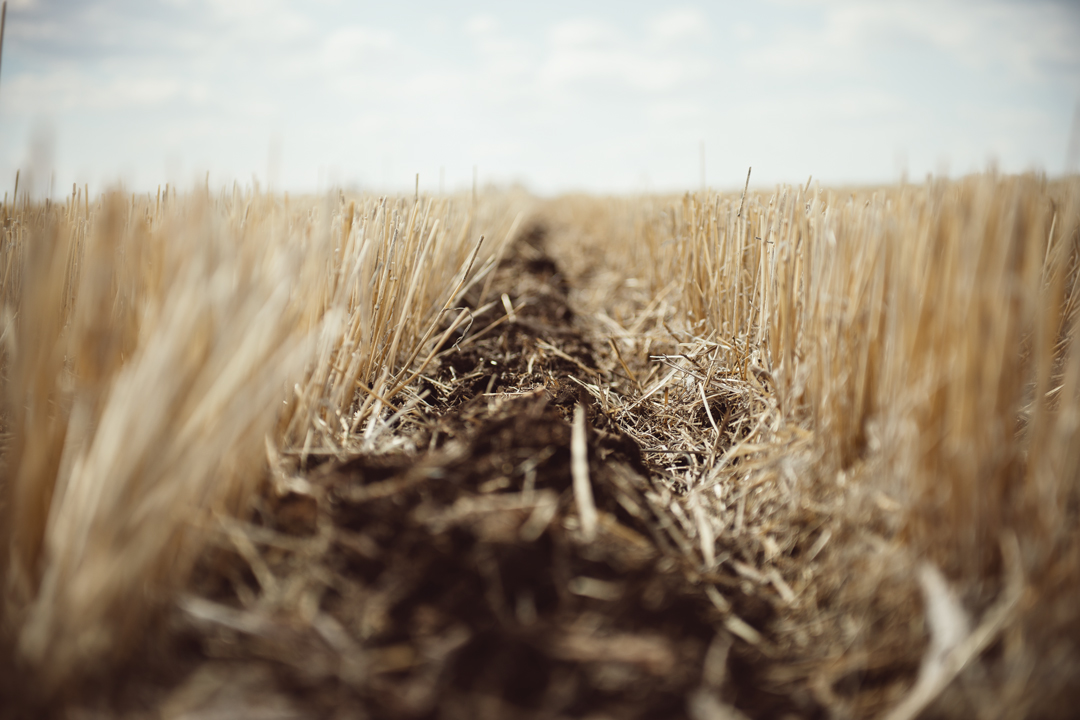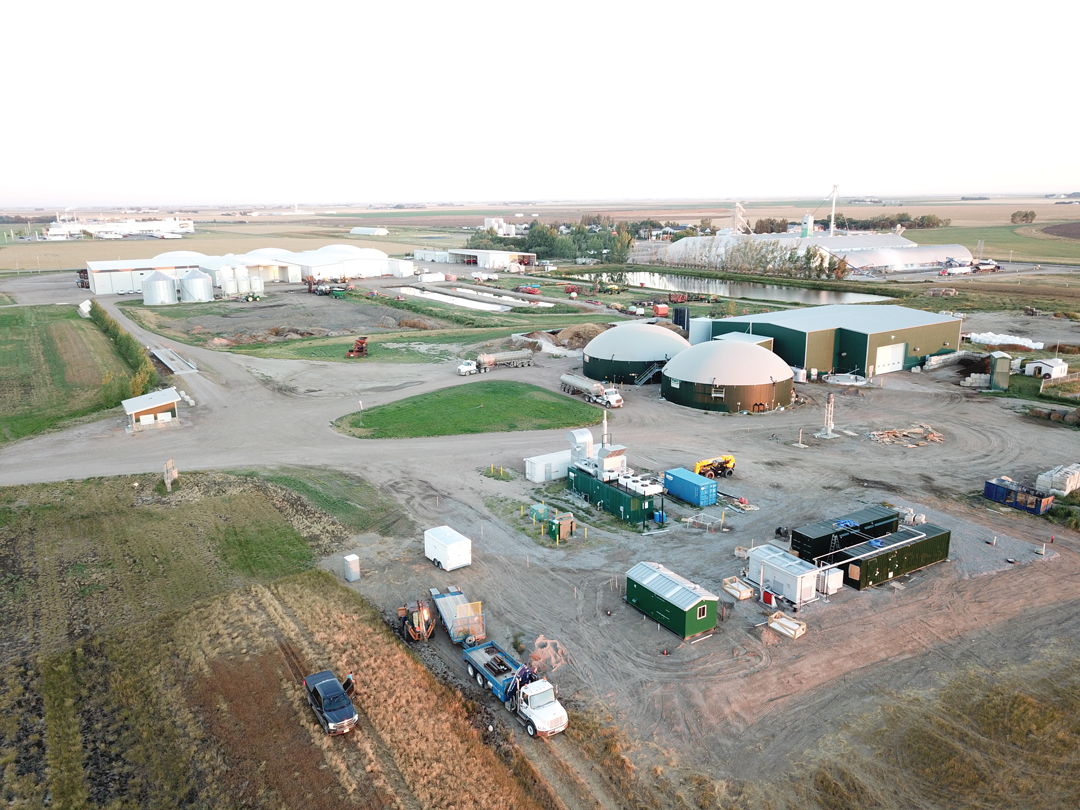THE MORE THE MERRIER
HIGHER SEEDING RATES DELIVER EVEN MATURITY, FEWER WEEDS, GREATER YIELDS
BY LEE HART • PHOTO BY TWITCHY FINGER PHOTOGRAPHY
Greg Stamp knows that a higher seeding rate generally produces a better crop.
The southern Alberta seed grower targets a particular plant-stand number for each crop and calculates a seeding rate that, after expected seed and seedling mortality losses are accounted for, should produce the desired number of plants. He calculates the seeding rate, by first using a thousand kernel weight formula (tkw), see sidebar which helps determine the number of seeds in a pound or, ultimately, a bushel of seed.
With wheat, for example, targeting a plant count of 30 to 35 plants per square foot, produces a much more even stand than does a lower rate. With a denser plant stand, the crop provides more competition against weeds and there is less tillering, so a greater portion of the plant is its primary-yield-producing main stem. The crop matures evenly, which is a benefit at harvest but also in-crop. If one plans to apply a fungicide, more of the crop is at the same growth stage and effectiveness is improved. Ultimately, a higher, more even-maturing plant stand should increase yield.
“I generally push for higher seeding rates,” said Stamp, who handles sales for Stamp Seeds pedigreed seed farm at Enchant. “The target plant stand and seeding rate varies whether a crop is being grown under irrigation or dryland conditions.” His seeding practices don’t follow the old rule-of-thumb: a flat-rate seeding approach that 1.5 to 2.5 bushels of wheat seed will work. He uses the tkw measurement on each seed batch for all crops.
Stamp Seeds produces good-quality, high-yielding seed varieties, but depending on the seed batch, seeding rates may vary, said Stamp. With each seed batch sold, Stamp Seeds gives customers a pre-calculated tkw, as well as seeding rates based on seed size for targeted plant populations.
“On dry land in southern Alberta, if you are targeting a plant stand of between 25 and 30 plants per square foot, the seeding rate can vary from 1.5 to 2.9 bu/ac depending on seed size,” said Stamp. “On irrigation, targeting 35 to 40 plants per square foot, the seeding rate can range from 1.8 to 3.9 bu/ac, again based on seed size.
“With a small-seed Canada Prairie Spring Wheat variety such as SY Rowyn, for example, to achieve 25 plants per square foot I would need to seed about 1.5 bu/ac and to get 40 plants I’d bump the seeding rate to 2.4 bu/ac. Year-to-year I have noticed a 20 per cent increase or decrease in seed size depending on growing conditions, so it’s critical farmers talk seed size.”
Stamp said that, considering all other inputs, increasing seeding rate doesn’t substantially drive up costs. “Even if someone is using their own seed, research shows it is important to have a proper plant stand to achieve your best yields.” It’s necessary to go beyond two bu/ac for all cereals, he said, because times are changing. Notably, care should be taken with rate calculations as newer crop varieties possess higher yield potential, but the seed size within a variety or even within batches can vary substantially.
Crop research in the past 15 years has determined that higher seeding rates generally produce higher yields and improved quality. This is the message advocated by Brian Beres, research scientist and agronomist at the Agriculture and Agri-Food Canada Lethbridge Research and Development Centre. Optimizing yield demands a farmer put enough seed in the ground to produce sufficient plants numbers.
New recommendations may seem extreme, but he said research continues to confirm higher seeding rates translate to higher plant counts and produce much better crops.
“The fact is that the genetic potential of new varieties has been steadily increasing over the years,” said Beres. “And when we look at how to exploit that genetic potential—achieve yields the crop is capable of producing—it all starts with higher seeding rates, and making sure there are enough plants in the field.” His research since the early 2000s focuses on spring and winter cereal crops, but research for all crops tends to produce similar results.
Beres said some old seeding practices, which placed 20 to 25 seeds per square foot, or less, resulted in crop stands with about 15 to 20 plants per square foot. “And even though, when seeding at lower rates your percentage of emergence is high, it is still a relatively thin stand that reduces crop competition with weeds and increases tillering, which resulted in more uneven maturity and, ultimately, less stable yields.”
Research has led to more “extreme” seeding rate recommendations. Beres recommends a seeding rate of 45 seeds per square foot for winter wheat that, after expected mortality, should produce 30 to 35 plants per square foot. He adds that durum and CWRS varieties also perform well at a seeding rate of 45 seeds per square foot. He therefore recommends a minimum of 40 seeds per square foot for most spring cereals other than malting barley, which research shows performs best at a rate of 30 to 35 seeds per square foot.
With the higher seeding rate, even using high-quality, high-germination seed, he said mortality may be in the 20 to 25 per cent range, but that’s not necessarily bad. “With the higher seeding rate, the weakest of those seedlings will die, so what you’re left with is a much more vigorous and robust plant stand,” he said.
Higher plant density will also reduce tillering. “Some producers might decide to seed light and let the tillers fill in the crop,” said Beres. But more tillers increase unevenness of maturity and they don’t produce as much seed. “The main stem of the plant produces 60 to 70 per cent of seed,” he said. “With higher seeding rates, you end up with more main stems, which should translate to higher yields.”
All farmers appreciate the benefits of even crop maturity, especially when it comes to harvest. However, Beres said this is also an in-crop benefit—an even-maturing, denser stand will suppress weeds and improves the efficacy of fungicide application.
“If the crop is better able to suppress weeds, it’s a possibility a producer could reduce herbicide applications,” he said. “And when applying fungicides, if the stand has more even, uniform flowering, you are treating more plants at the proper time rather than perhaps 30 to 40 per cent.”
Beres noted research has shown a higher seed rate that is guided by the initial tkw calculation will produce a more vigorous, even-maturing crop that will generate economic returns that meet or beat lower rates.
CALCULATING KERNELS
To calculate tkw, seed grower Greg Stamp counts and weighs 1,000 kernels of seed, determining the number of seeds in a pound or bushel of this particular cereal or oilseed using the following formula: (lb/ac) = desired plant population/ ft² x 1,000 K wt. (g) ÷ seedling survival rate (in decimal form such as 0.90) ÷ 10.4.
With the results, he determines the pound or bushel seeding rate per acre. Easy-to-use seeding-rate calculators are also available online.






Comments